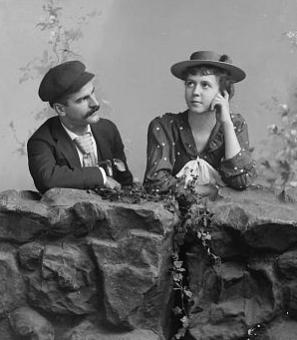The Legends of Lincoln's Ghost
When researching the ghosts of Washington’s most famous house, one story stands out as the most colorful.
During World War II, the British Prime Minister Winston Churchill paid a visit to his allies in the White House. After long days spent discussing the war with President Franklin D. Roosevelt and his wife, Eleanor, Churchill liked to retire to his bedroom and soak in a hot bath. On one such evening, the Prime Minister emerged from his bath, signature cigar in hand, and was startled to see a figure leaning on the mantlepiece in his bedroom. The transparent man was none other than President Abraham Lincoln, apparently deep in thought and paying no notice to the naked head of state in the room. Shocked, but still witty, Churchill remarked, “Mr. President, you seem to have me at a disadvantage.” Lincoln’s ghost smiled to himself before vanishing. Churchill spent the rest of the night in a bedroom across the hall.[1]
There are a lot of stories about Lincoln’s ghost in the White House repertoire.[2] Staff have heard mysterious footsteps outside rooms associated with Lincoln, like the Lincoln Bedroom. Presidential pets bark at nothing. President Harry Truman and his daughter, Margaret, often claimed to hear Lincoln pacing at night.[3] Another distinguished guest, Queen Wilhelmina of the Netherlands, saw Lincoln’s ghost during her visit in 1942. After hearing a knock on her door one night, she came face-to-face with him, dressed in his usual suit and top hat. When she reported the incident to her hosts, the Roosevelts seemed sympathetic but not really surprised.[4] Lincoln’s ghost was—and still is—a prevalent and active figure in the house’s lore.
Though the White House seems to be his most frequent haunt, Lincoln’s ghost has been seen all over the city. The online forums of paranormal enthusiasts trace reported sightings and encounters—a quick search of Lincoln’s name turns out hundreds of results. At Ford’s Theatre, visitors have reported hearing the residual sounds of a gunshot and screams, or seeing Lincoln in his box during performances.[5] The ghostly pandemonium continues outside, on 10th Street NW, where passersby occasionally hear the screaming, yelling, and crying that accompanied reports of the President’s murder. Visitors to the Peterson House feel heavy and sad when entering the room where Lincoln died—and where his bloodstained sheets are on display. The tall spectral figure has allegedly been spotted at the Capitol, traveling down Pennsylvania Avenue, and even visiting his memorial on the National Mall (which, obviously, didn’t exist in his lifetime). Adam Selzer, an author and paranormal historian, calls Lincoln the “Johnny Appleseed of ghosts,” leaving traces of himself wherever he traveled in life.[6]
It makes sense that, of all the ghosts in Washington, Lincoln is the most famous. He’s one of the most noteworthy Presidents, certainly. He lived in the city during a time of great conflict and suffering. He endured his own personal tragedies during his time in office. His family dabbled in the paranormal fads of the day. And, of course, he was shot at Ford’s Theatre, later dying in a makeshift deathbed across the street. The majority of the nation mourned, feeling a collective bereavement that has never quite healed. Altogether, it’s the perfect recipe for an ongoing ghost story.
In the aftermath of his death, as the nation grappled with the drama, the presence of a peaceful and resolute ghost could be comforting. Mary Todd Lincoln, especially, believed that contact with her husband’s ghost could ease the pain of his passing. Even before the assassination, she demonstrated a keen interest in Spiritualism—a nineteenth-century movement encouraging communication with spirits. In 1862, after the death of the Lincolns’ eleven-year-old son Willie, Mary began attending séances with a group of psychic mediums in Georgetown.[7] She also invited the mediums to the White House on several occasions, where they hosted séances in the Red Room.[8] According to Nettie Colburn Maynard, one of the mediums present, the President attended some of these séances with his wife and, though initially skeptical, came to believe in their power.[9] (Maynard made these claims in her attention-grabbing memoir Was Lincoln a Spiritualist?, published at the height of Spiritualism’s popularity, so it’s hard to know if her elaborate and wistful stories are true.) After her husband’s death, Mary continued to experiment with Spiritualist methods in order to contact his ghost. Famously, he appeared to her in an 1870 photograph by William H. Mumler—a hoax photographer who specialized in taking photos of the dead.[10] It became a sensation, furthering belief in Lincoln’s ghost as a comforting, reassuring presence for his family and country.
Around the same time, rumors of Lincoln’s lingering presence in the White House began to take off in D.C. Staff reported strange occurrences and noises, which they attributed to the ghost of the late President. Jerry Smith—a footman, “duster,” butler, cook, and doorman who began service during President Ulysses S. Grant’s administration—claimed to have seen many ghosts during his thirty-five years at the White House, including Lincoln’s.[11] He often stood at the North Entrance and, on slow news days, entertained reporters with stories of his paranormal experiences. “He is a firm believer in ghosts…and has a fund of stories about these uncanny things that afford immense entertainment for those around him,” described one Chicago newspaper. “He firmly believes that the White House is haunted by the spirits of all the departed Presidents…and at intervals he strengthens his position by telling about some new strange noise he has heard or some additional evidence he has secured.”[12]
Even though they’ve been popular since his death, stories about Lincoln’s ghost became more common in the twentieth century. Grace Coolidge, wife of President Calvin Coolidge, became the first notable White House resident to spot him—she told a magazine that Lincoln was staring out the window of the Yellow Oval Room, which he used as a library during his presidency.[13] The amount of sightings during Franklin D. Roosevelt’s administration, which spanned both the Great Depression and World War II, led writers to believe that Lincoln showed himself during periods of national strife. Eleanor Roosevelt, whose study occupied Lincoln’s former bedroom, felt his presence when she worked late into the night—looking over her shoulder, as if offering guidance or silently approving her work.[14] Harry Truman believed that Lincoln simply felt protective of the house itself—in fact, he credited the ghost with helping to save it in the late 1940s. In an attempt to debunk the strange footsteps his family heard at night, Truman ordered an investigation into the White House’s structure and found that it was in danger of collapse.[15] A complete renovation followed.
The most recent high-profile haunts came in the 1980s, during President Ronald Reagan’s time in the house. “Most of the White House staff seemed to believe in Lincoln’s ghost,” Nancy Reagan wrote in her memoirs, relaying several instances of mysterious noises and missing objects attributed to the ghost.[16] The Reagans’ dog always barked outside the Lincoln Bedroom and refused to go inside. Their daughter, Maureen, once awoke to a shadowy, transparent figure walking near her bed—because of the well-known legends, she assumed that her late-night visitor was Lincoln. Reagan, for his part, laughed off all these stories. “If you see him again,” he told his daughter, “why don’t you send him down the hall? I’ve got a few questions I’d like to ask him.”[17]
Lincoln’s ghost has been quiet lately. Ghost stories just aren’t part of the national narrative like they were in the nineteenth century, when a grieving nation took comfort in the fact that Lincoln still guarded the White House. Nowadays, Lincoln’s ghost only appears to those looking for him, in places which are (often erroneously) linked to him. He gets attention at Halloween—yes, we’re guilty—but otherwise slips into D.C. folklore, just another fun and spooky story.
Does Lincoln’s ghost really exist, though? If we want him to. Nancy Reagan probably summed it up best when, in her memoirs, she pondered the question. “Who’s to say?” she wrote. “But if he is there, I wish we could have seen him before we left.”[18] Whether true or not, all of these sightings and stories prove that Lincoln’s ghost exists in our national consciousness—and has for a long, long time.
Footnotes
- ^ Charles A. Stansfield, Jr., Haunted Presidents: Ghosts in the Lives of the Chief Executives (Stackpole Books, 2010), 63; Marjorie Garber, Profiling Shakespeare (Routledge, 2008).
- ^ “White House Ghost Stories,” The White House Historical Association, https://www.whitehousehistory.org/press-room-old/white-house-ghost-stor…
- ^ Stansfield, Jr., 63.
- ^ Ibid.
- ^ Stansfield, Jr., 64.
- ^ Adam Selzer, Ghosts of Lincoln: Discovering His Paranormal Legacy (Llewellyn Worldwide, 2015), 5.
- ^ Alexandra Kommel, “Séances in the Red Room,” The White House Historical Association, https://www.whitehousehistory.org/seances-in-the-red-room
- ^ Ibid.
- ^ Nettie Colburn Maynard, Was Abraham Lincoln a Spiritualist? (Philadelphia: Rufus C. Hartranft, 1891).
- ^ Peter Manseau, “Meet Mr. Mumler, the Man Who ‘Captured’ Lincoln’s Ghost on Camera,” Smithsonian Magazine, October 17, 2017, https://www.smithsonianmag.com/smithsonian-institution/meet-mr-mumler-m…
- ^ William Bushong, “The Origin of the Abraham Lincoln Ghost Story,” The White House Historical Association, October 19, 2015, https://www.whitehousehistory.org/the-origin-of-the-abraham-lincoln-gho…
- ^ Ibid.
- ^ Stansfield, Jr., 62-63.
- ^ Stansfield, Jr., 63.
- ^ Stansfield, Jr., 63-64.
- ^ Nancy Reagan and William Novak, My Turn: The Memoirs of Nancy Reagan (New York: Random House, 1989), 85.
- ^ Ibid.
- ^ Ibid.


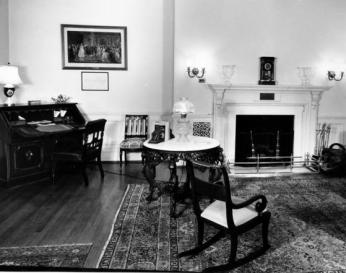

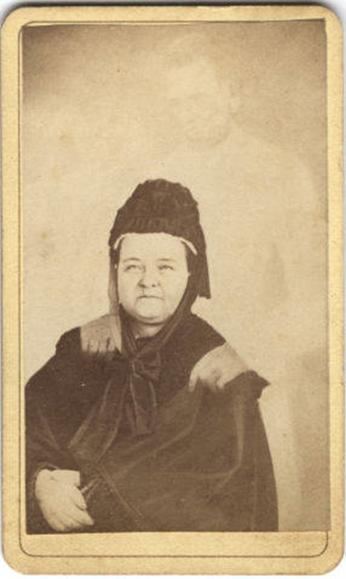

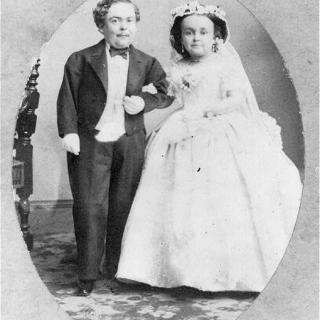
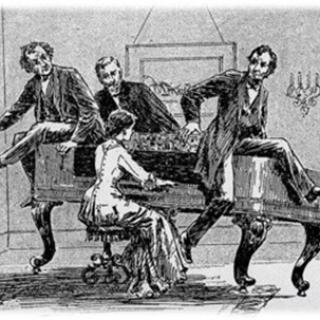
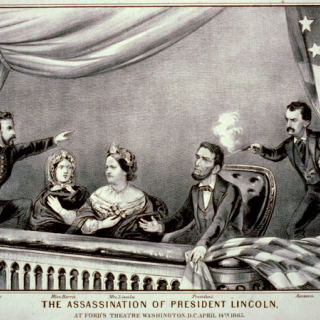
![Sketch of the mythical fuan by Pearson Scott Foresman. [Source: Wikipedia]](/sites/default/files/styles/crop_320x320/public/2023-10/Goatman_Wikipedia_Faun_2_%28PSF%29.png?h=64a074ff&itok=C9Qh-PE1)











